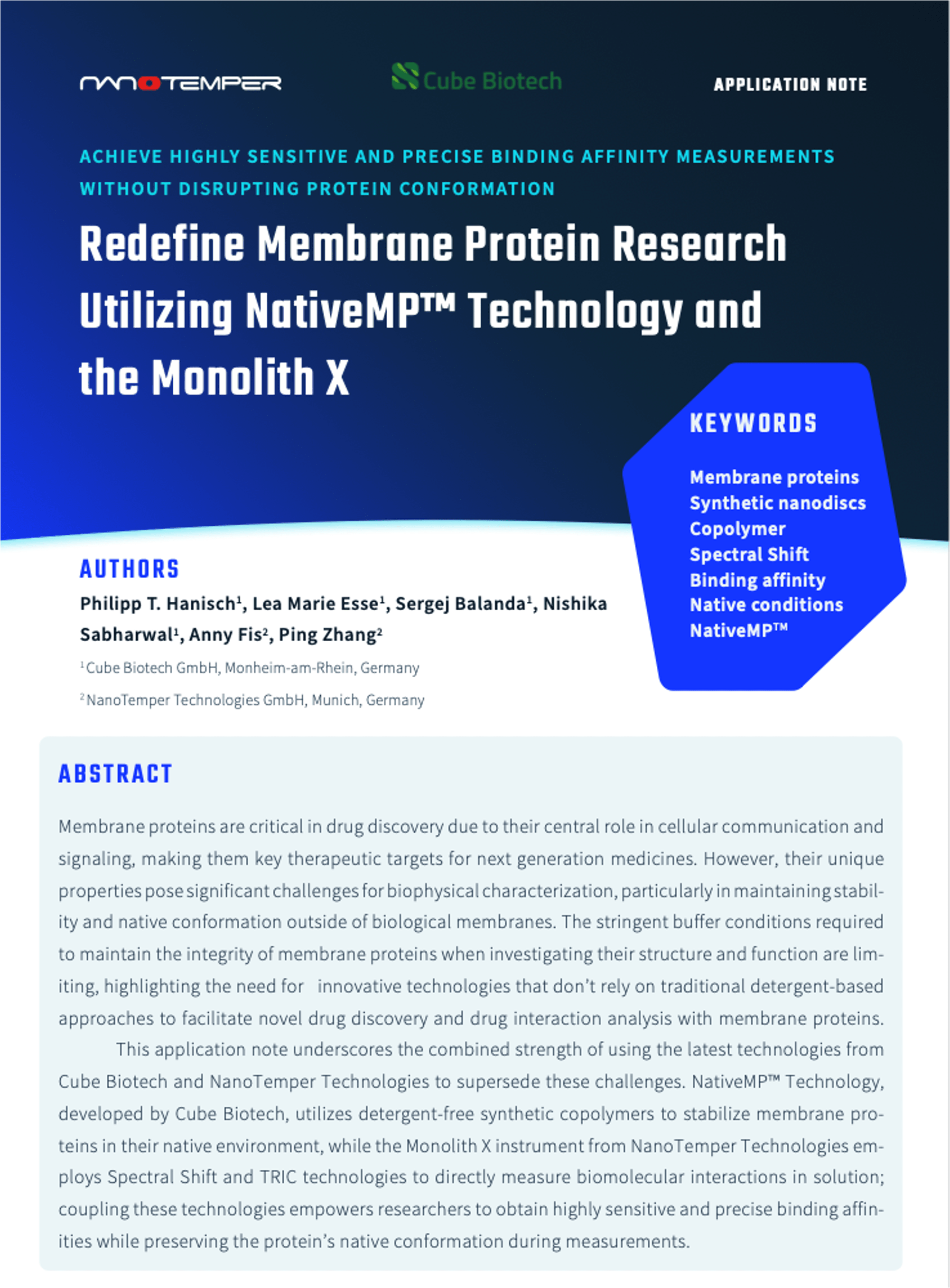Boland, C., Olatunji, S., Bailey, J., et al.
Analytical Chemistry 2018, vol: 90(20) doi: 10.1021/acs.analchem.8b03176
Abstract
Label-free differential scanning fluorimetry (DSF) is a relatively new method for evaluating the stability of proteins. It can be used as a screening tool for downstream applications such as crystallization. The method is attractive in that it requires miniscule quantities of proteins, it can be performed using intrinsic tryptophan and tyrosine fluorescence, and, with the right equipment, it is easy to perform. To date, the method has been used with proteins in liquid solutions and dispersions. It was of interest to determine if DSF could be used with membrane proteins in the lipid cubic phase (LCP), which increasingly is being used for crystallization in support of structure–function studies. The cubic phase is viscous. Furthermore, in coexistence with excess aqueous solution, as happens during crystallization trials, it can become turbid and scatter light. The concern was that these features may render the mesophase unsuitable for DSF analysis. However, using lysozyme and four integral membrane proteins we demonstrate that the method works with all tested proteins in solution and in the LCP. Of note is the observation that some of the test membrane proteins are more stable while others are less so in the mesophase. The method also works in ligand binding measurements. Thus, DSF should prove useful as an analytical tool for identifying host and additive lipids, detergents, precipitants and chemical probes that support the generation of quality crystals by the cubic phase method. Microscale thermophoresis was used to supplement the DSF study and was also shown to work with proteins in the mesophase. Measurements with lysozyme highlight the utility of the cubic mesophase as a model system in which to perform confinement studies.
Topics: Prometheus, nanoDSF, Membrane Proteins, Publications










